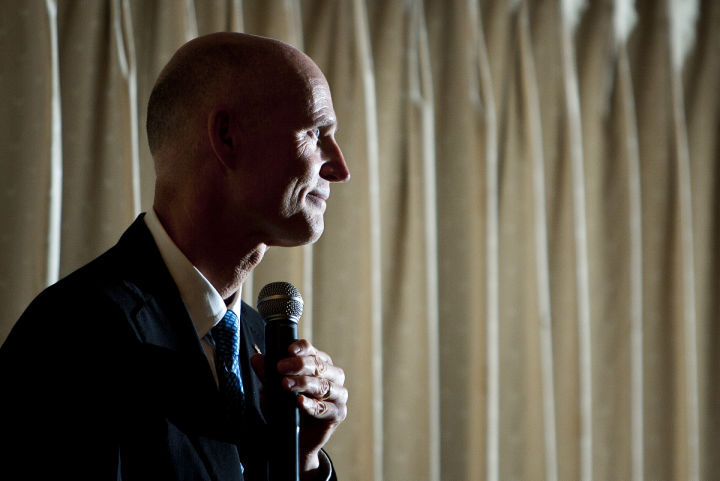
INDIAN RIVER COUNTY — Indian River County could begin rebuilding some of its most eroded beaches as early as this fall if Gov. Rick Scott leaves the money in the state’s 2013-2014 budget.
The Florida Legislature closed its session with a multimillion gift to the county to replace sand that was lost to the heavy surf churned up by passage far offshore of Hurricane Sandy.
The legislature approved $37.5 million for sand replacement with $4.8 million earmarked for Indian River County.
All that stands in the way of making the project a reality this fall is Scott’s signature, permits, the availability of sand and – perhaps to a lesser degree – local money.
Scott has until May 24 to veto individual items in the budget, and his view of the Legislature’s appropriation for sand replacement was not known at press time.
Still, county officials are hopeful the project will help fill in beaches along the northern section of the barrier island.
The surf from Hurricane Sandy caused havoc from one end of the county to the other with damage estimates coming in at about $9.6 million.
The bulk of the losses, about $5 million, were in the recently completed, three-year project called Sector 3 extending from Seaview just north of Windsor all the way south to John’s Island.
A bulk of the state’s proposed $4.8 million – $2.5 million – is currently planned to be used to rebuild Sector 3.
How the rest will be divided for other battered areas including the Sebastian Inlet and other sections along the coastline is still being worked out and contingent on 50-50 guidelines, said Indian River County Coastal Engineer James Gray.
That means state money would pay for only 50 percent of the work and the remainder would have to come locally.
Getting the necessary permits and designs approved for the northern county project may not prove as hard as it has in the past because so little time has passed since the project was initially approved, said Gray.
The Wabasso Beach area is in desperate need of additional sand to curb the erosion, said Gray, who was happy to see the state willing to pay for part of the project after the federal government declined to give the county any Federal Emergency Management Agency money.
Beach profile samplings of the Wabasso Beach area done between 1972 and 1986 and then again from 1986 to 2005 show that the so-called wet beach shrunk by 40 feet and the berm – or dry beach – diminished by 68 feet, Gray said.
A more detailed analysis of 17 miles of the barrier island coast line, including city beaches, is expected to begin in June now that the Indian River County Commission agreed last week to pay for the $17,000 study.
What will not be included in that beach study is the five miles of county coastline in the Sebastian Inlet district. The last major study was in 2005, said Gray.
In spite of the huge costs associated with the Sector 3 project when the county used upland sand rather than dredging it from the ocean’s floor, Gray said as soon as Scott signs the measure, the county will go out for bids for both upland and off-shore sand.
“Obviously, we will need to get the most bang for our buck,” Gray said.
Another issue will be availability, Gray said, considering so many areas along the coast will be looking for sand.
“I’m hopeful we can get the permits within the timeframe to contract this (project out) this coming fall,” said Gray. “I’m hopeful and we are going to do our best to achieve that goal.”



